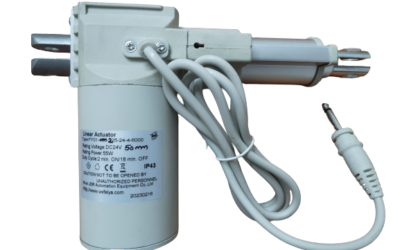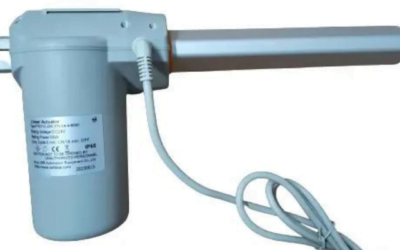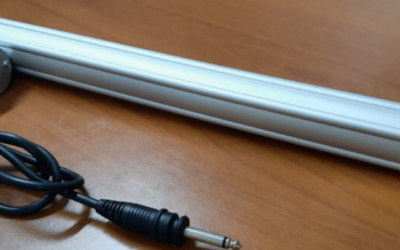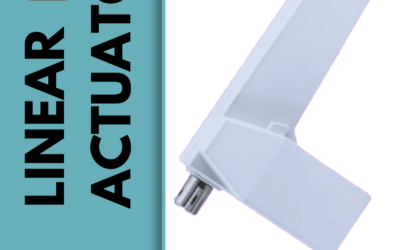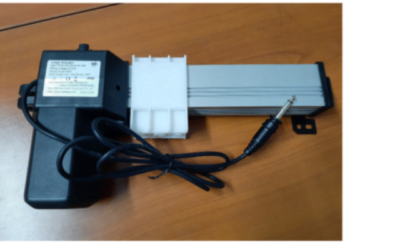BlogS
Electric Actuators working principle
Introduction: In the realm of modern engineering, the intricacies of motion control have evolved significantly, with electric actuators playing a pivotal role in transforming electrical energy into precise mechanical motion. This blog aims to delve into the working...
Linear Actuators The Ultimate Guide to Finding a Search
Kathir Sudhir Automation is providing The Ultimate Guide to Finding Linear Actuators. Introduction: Linear actuators are incredible devices that play a crucial role in various industries and applications, from robotics and automation to healthcare and aerospace. If...
Exploring Rotary Electric Actuators: Types, Functions, and Applications
Electric actuators are essential components in various industries, automating tasks, and improving efficiency. They come in different shapes and sizes, each designed for specific applications. In this article, we will focus on a specific type of electric actuator -...
Electric Linear Actuators in Smart Furniture and Appliances
Kathir Sudhir Automation is trusted dealers for Electric Linear Actuators in smart furniture and appliances. Enhance automation with precise, reliable solutions for modern living spaces. In an era where technology continues to reshape our lives, the integration of...
Simplifying Motion Control with Electric Linear Actuators
In a world driven by technological advancements, precision and control are paramount in various industries, from manufacturing and robotics to aerospace and healthcare. When it comes to achieving precise linear motion, electric linear actuators have emerged as...
Exploring the Versatile World of Slider Drive Linear Actuators
Introduction: In the realm of automation and motion control, linear actuators play a pivotal role in converting rotational motion into linear motion. Among the various types of linear actuators available, slider drive linear actuators stand out for their versatility...
Frequently Asked Questions(FAQ)
What is a linear actuator?
A linear actuator is a device that converts rotational motion into linear motion. It is used to move objects in a straight line
What are the benefits of using a linear actuator?
The benefits of using a linear actuator include precise and controlled linear motion, compact size, easy installation, and efficiency.
How do I install and maintain my linear actuator?
The installation and maintenance of a linear actuator will depend on the specific model and type. Refer to the manufacturer’s instructions for installation and maintenance guidelines.
What safety precautions should I take when working with linear actuators?
Always follow the manufacturer’s instructions and safety guidelines when working with linear actuators. Ensure that the actuator is properly secured and that the power source is disconnected before working on the actuator.
What is the difference between a linear actuator and a rotary actuator?
A linear actuator moves in a straight line, while a rotary actuator rotates around an axis. Linear actuators are used when linear motion is required, whereas rotary actuators are used when rotational motion is needed.
What is the difference between an electric linear actuator and a hydraulic linear actuator?
An electric linear actuator uses electrical energy to create linear motion, while a hydraulic linear actuator uses pressurized hydraulic fluid to create linear motion. Electric linear actuators are typically easier to install and maintain, while hydraulic linear actuators can generate higher force.
Can a linear actuator be used for precise positioning?
Yes, linear actuators are often used for precise positioning due to their ability to provide accurate and repeatable linear motion.
How do I determine the stroke length of a linear actuator?
The stroke length of a linear actuator is the distance the actuator can travel in a straight line. To determine the required stroke length, consider the distance the actuator needs to move to complete its intended task.
What are some common materials used to make linear actuators?
Linear actuators can be made from a variety of materials, including aluminum, stainless steel, plastic, and carbon fiber. The choice of material will depend on the specific application and environmental conditions.
Can a linear actuator be used in hazardous environments?
Yes, some linear actuators are designed for use in hazardous environments and are made from materials that can withstand exposure to extreme temperatures, chemicals, or other hazardous conditions.
Can a linear actuator be customized to fit my specific application?
Yes, many manufacturers offer customized linear actuators to fit specific applications. These can include modifications to stroke length, force, speed, mounting options, and environmental protection.

